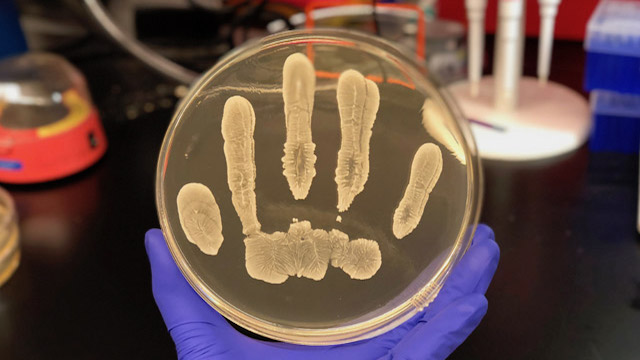A strain of Staphylococcus epidermis found on human skin contains a chemical with cancer-fighting abilities, according to a study published yesterday (February 28) in Science Advances.
“The presence of this strain may provide natural protection, or it might be used therapeutically to inhibit the growth of various forms of cancer,” Richard Gallo, a physician-scientist at the University of California, San Diego, tells The Guardian.
While Gallo and his colleagues were examining the antimicrobial properties of skin bacteria, they came across a strain of S. epidermis that produced 6-N-hydroxyaminopurine (6-HAP), a molecule that resembles adenine, a key constituent of DNA. “Because of that structure, we wondered if it interfered with DNA synthesis,” Gallo tells Science News.
When the team investigated further, they found that 6-HAP blocked the activity of DNA polymerase, an enzyme required for the formation of DNA. They also discovered that 6-HAP was able to inhibit the proliferation of various types of tumor cells, such as melanoma and lymphoma, in a dish. The chemical did not inhibit the growth of normal human skin cells, because they possess 6-HAP-deactivating enzymes that were not present on cancerous cells.
The researchers then applied the 6-HAP-producing bacteria to mice’s skin and found that the animals developed fewer premalignant skin tumors after being irradiated with UV light than rodents that received a strain of the microbes that didn’t produce the chemical.
The findings highlight “the potential of the microbiome to influence human disease,” Lindsay Kalan, a biochemist at the University of Wisconsin–Madison, tells Science News. However, she adds, “it is important to understand how the microbiome interacts with its human host before we can begin to manipulate it for disease treatment.”







